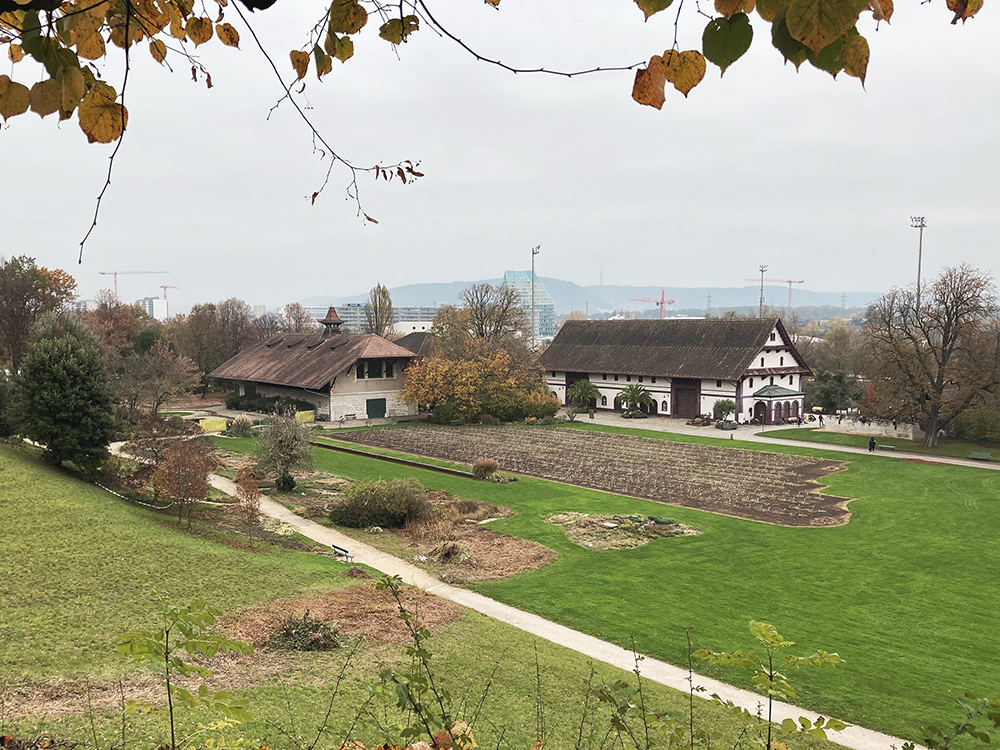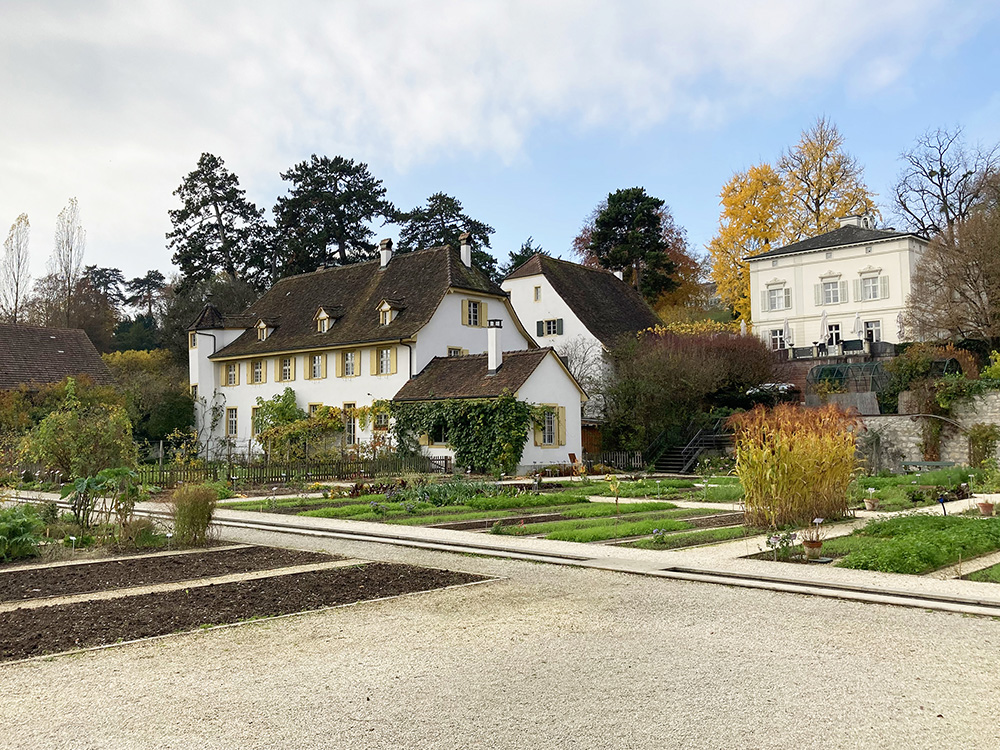SITUATION
The Merian Gardens are a spacious botanical garden on the outskirts of Basel and are located in the millennia-old river landscape of the Birs. The terraces created by the river structure the Merian Gardens topographically. Over the centuries, various personalities have left their mark on the area, including Christoph Merian, whose possessions are currently managed by the Christoph Merian Foundation. In the 19th century, the wild river landscape was first converted into an important agricultural site and later, step by step, into a garden complex. Today, the Merian Gardens combine scientific plant collections, nature conservation areas of national importance, horticulture, and biological non-profit agriculture with farm animals. They are aimed at a culturally and scientifically interested public and are a recreational area for the local population.
CHARACTERISTICS AND RESEARCH FOCUS
We chose the field study of the Merian Gardens because it offers a broad field of investigation with a variety of perspectives, needs, services, and correlations of the involved stakeholders. Negotiation processes between education and entertainment, people and nature, farm animals and wild animals as well as cultivated and wild plants. On paths, along canals, in greenhouses and on animal trails or in the vicinity of their shelters, a complex interplay of the actors and habitat types can be observed. The field study was carried out in close cooperation with the Merian Gardens.
They were interested in using our technologies to learn more about the non-human inhabitants that populate the Merian Gardens. The biologist and Head of Science & Documentation, Dr. Lisa Eggenschwiler accompanied the research and established contacts with the various people working in the Merian Gardens, from the management to the gardening and agriculture departments and to the mediation team. In this field study the focus was on investigating the relationship between nature, culture and technology, and the inclusion of sensor-based survey methods and multimedia presentation formats for analyzing biodiversity and ecological knowledge production.

In the foreground: a dry meadow; in the middle: lawn and iris flower collection; in the background: historical farm buildings by the architect Melchior Berri (1801-1854), the left one today used as a restaurant.

In the foreground: the cottage garden; in the background: historical buildings, the mill (Mill Museum); above: the Villa Merian, built by Alexander Löffel (1662–1736) and used as a stately home by the Merians.
Research question of the field study: What scope for action arises from the media-ecological determination of the behaviors, needs, achievements and mutual relationships of different actors in a hybrid ecosystem?
INTERVENTIONS
The following interventions were conducted in the field study:
-
Ecosystem Studies:
Bird Diversity, Pollinator Diversity, Human Presence
-
Communication Media:
Discover, Panorama